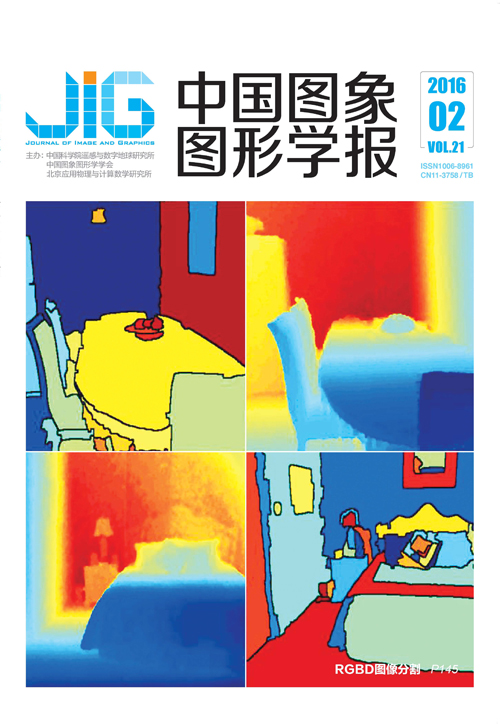
结合距离变换与边缘梯度的分水岭血细胞分割
缪慧司1, 梁光明2, 刘任任1, 丁建文3(1.湘潭大学信息工程学院, 湘潭 411105;2.国防科技大学电子科学与工程学院, 长沙 410075;3.爱威科技股份有限公司研发中心, 长沙 410013) 摘 要
目的 针对医学图像中细胞提取和粘连细胞分割问题,提出一种结合距离变换利用边缘梯度的分水岭血细胞显微图像分割方法。方法 首先,通过距离变换由细胞二值图生成距离地形图,取其局部极值点或点集作为前景标记,进行第1次距离分水岭变换;接着将第一步骤所得的分水岭脊线作为背景区域的标记,前景标记不变,视梯度幅度图为地形图,再一次进行梯度分水岭变换,得到细胞分割结果。两次分水岭变换前,均采用强制极小值的方法修改地形图,来控制地形图只在选取的标记处存在局部极小值。结果 该方法由距离图提取前景标记,将距离分水岭变换所得的脊线作为梯度分水岭变换的背景标记,能有效地分离粘连目标。相比于基于距离图分水岭变换,本文方法不过多依赖二值图像信息,保留了基于梯度图像的分水岭变换边缘定位准确的优点,又解决了其无法分割粘连目标和过分割的问题。结论 经多幅临床细胞图像分割实验验证,该方法可以实现图像中细胞的提取以及粘连细胞的自动分割,满足医学图像分割的要求。
关键词
Watershed algorithm using edge gradient combined with distance transformation for segmentation of blood cells
Miao Huisi1, Liang Guangming2, Liu Renren1, Ding Jianwen3(1.College of Information Engineering, Xiangtan University, Xiangtan 411105, China;2.School of Electronic Science and Engineering, National University of Defense Technology, Changsha 410075, China;3.R & D Center, AVE Technology Corp. Ltd, Changsha 410013, China) Abstract
Objective A method of watershed segmentation using the edge gradient combined with distance transformation for segmentation of microscopic images is proposed. This method aims to solve the problem of cell extraction and segmentation of overlapped cells. Method First, a topographic map from the binary image of cells is generated by transforming distance, after which the local extreme point or set of points are used as the marks of foreground and the first time distance watershed transformation is processed. Then, the resulting watershed ridge line from the previous step is used as the mark of the background region, and the mark of foreground is unchanged. The gradient magnitude is used as the topographic map so that the gradient watershed transformation is achieved, after which the results of segmentation are obtained. Before the two watershed transformations are achieved, the method of mandatory minimum value is used to modify the topographic map so that controlling the local minimum value in the topographic map can only be done within the region of the selected mark. Result The resulting ridgeline is used as the mark of the background in gradient watershed transformation, which can effectively separate the adhesion target. This method not only retains the advantages of edge positioning accuracy in watershed transform based on gradient images, but also solves the problems of adhesion objectives that cannot be segmented or adhesion objective that is oversegmented. Conclusion As verified by many clinical image segmentation experiments, the method can extract the cells from the images and segment the overlapped cells automatically. Thus, the method successfully meets the requirements of medical image segmentation.
Keywords
|



 中国图象图形学报 │ 京ICP备05080539号-4 │ 本系统由
中国图象图形学报 │ 京ICP备05080539号-4 │ 本系统由